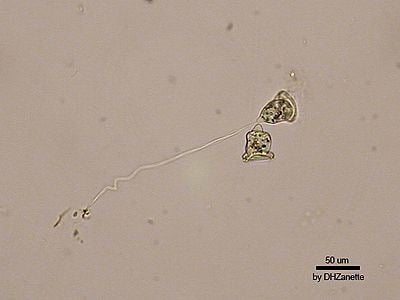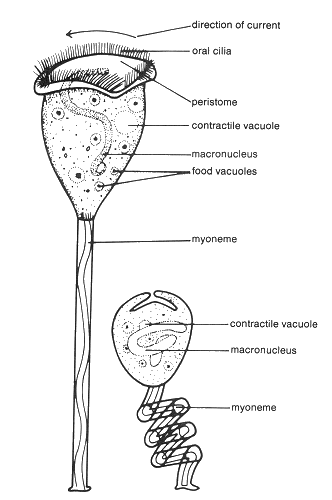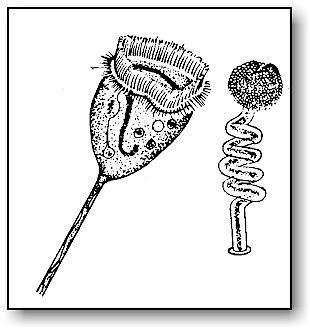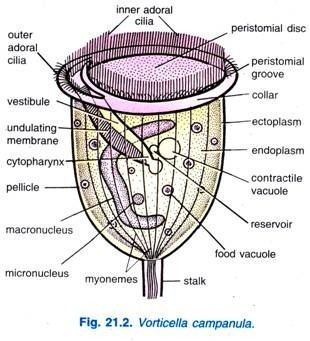Family Vorticellidae Rank Genus Higher classification Vorticellidae | Order Sessilida Scientific name Vorticella Domain Eukaryota | |
 | ||
Lower classifications Vorticella convallaria, Vorticella campanula, Vorticella citrina | ||
Vorticella 3
Vorticella is a genus of ciliates, with over 16 known Species. They are stalked, inverted bell-shaped ciliates, placed among the peritrichs. Each cell has a separate stalk anchored onto the substrate, which contains a contractile fibril called a myoneme. When stimulated, this shortens, causing the stalk to coil like a spring. Vorticella species mainly live in freshwater ponds and streams—generally anywhere protists are plentiful.
Contents

Reproduction is by budding, where the cell undergoes longitudinal fission and only one daughter keeps the stalk. The free daughter becomes a telotroch, which swims until it finds suitable substrate to fix and develop its own stalk. They reproduce by fission, which is also known as cell division. They are also capable of reproducing by conjugation, a form of sexual reproduction where two individuals attach at the oral groove and exchange DNA.

Other genera, such as Carchesium, resemble Vorticella, but are branched or colonial.
Vorticella species sometimes stay in clusters or groups considered as colonies, but they are not true colonies because each cell has its own individual stalk. This allows it to detach from the cluster at any time, usually by reverting to a telotroch when environmental conditions are unfavorable.

Vorticella feeding
Common species



